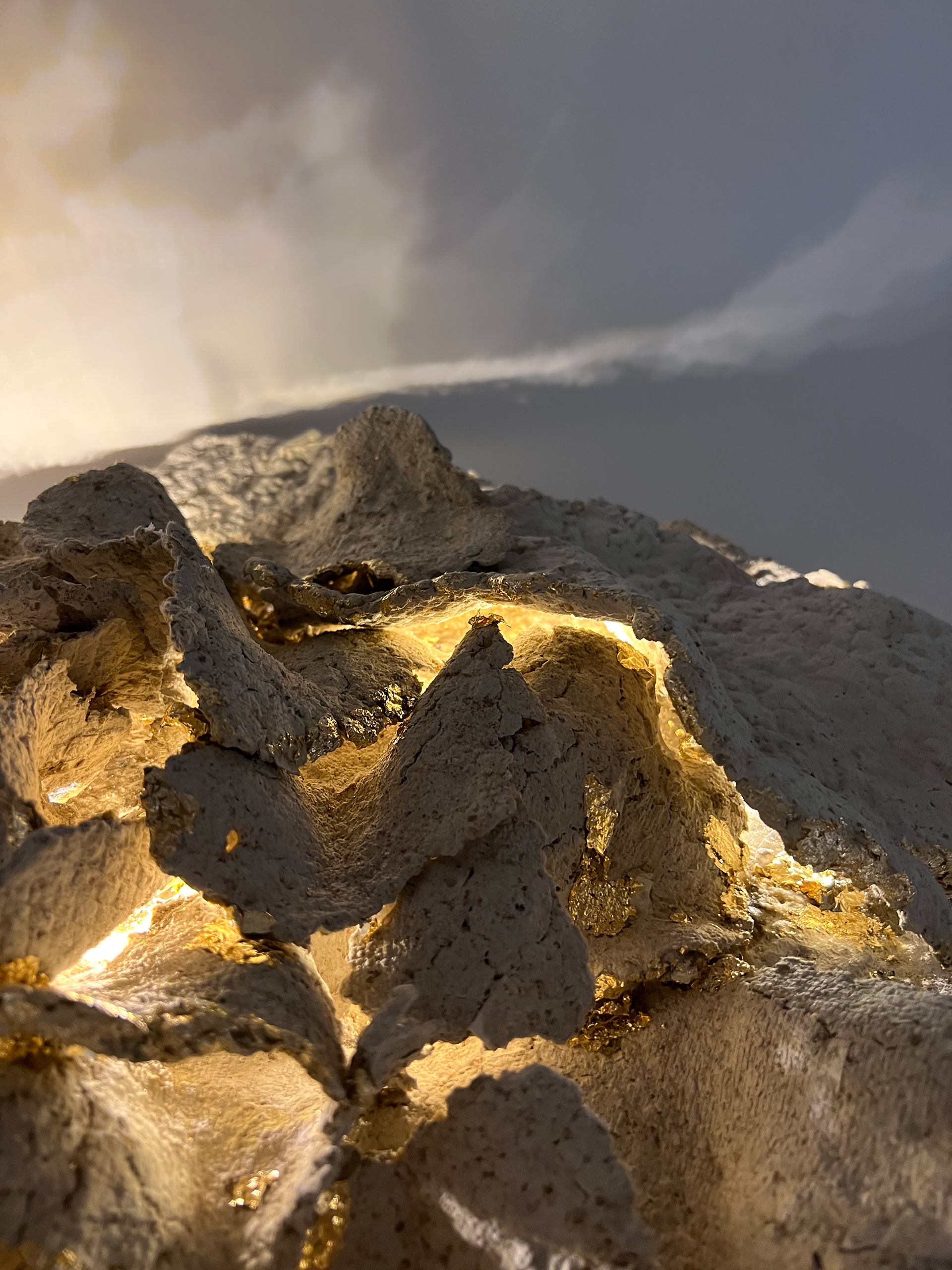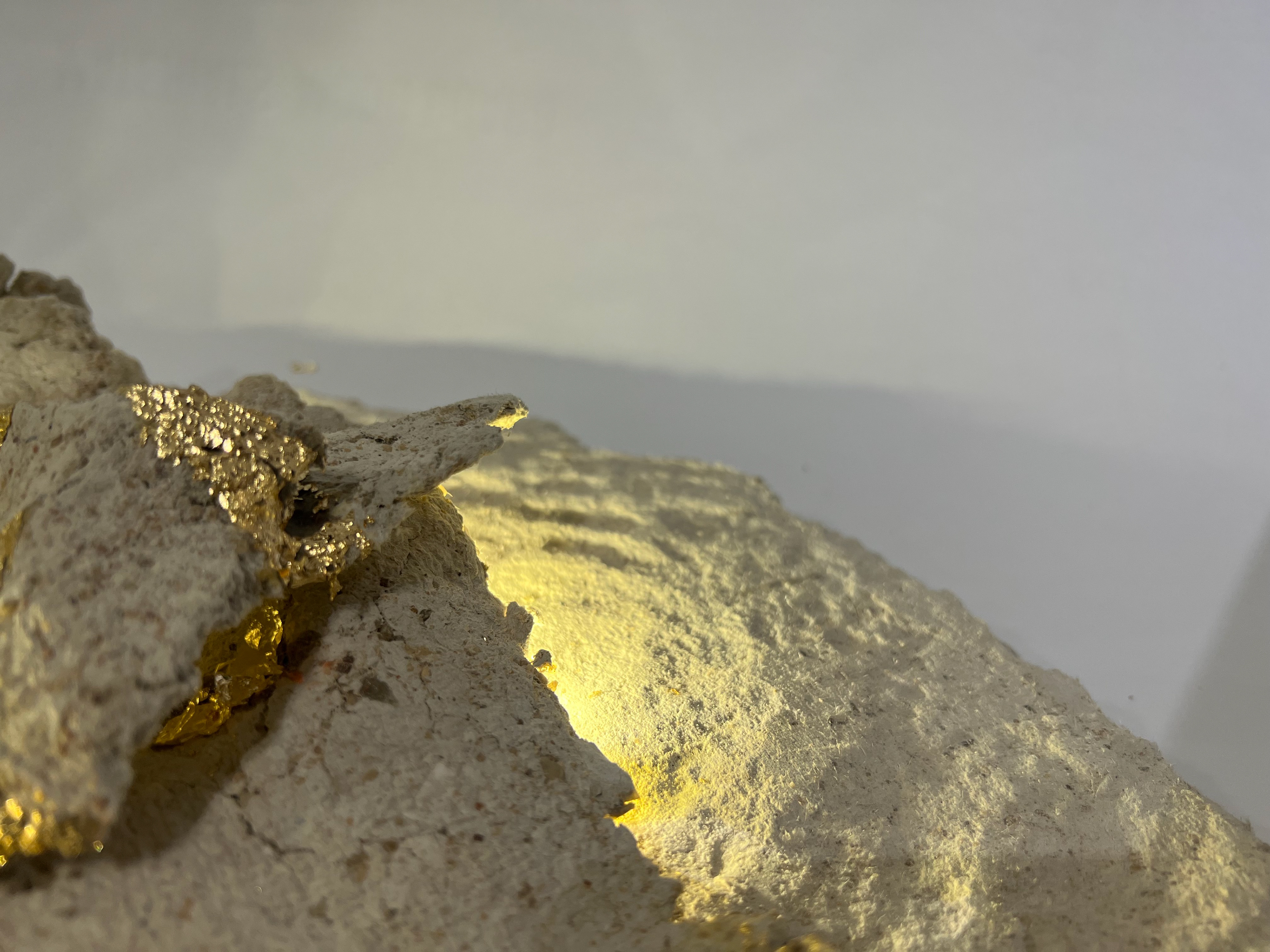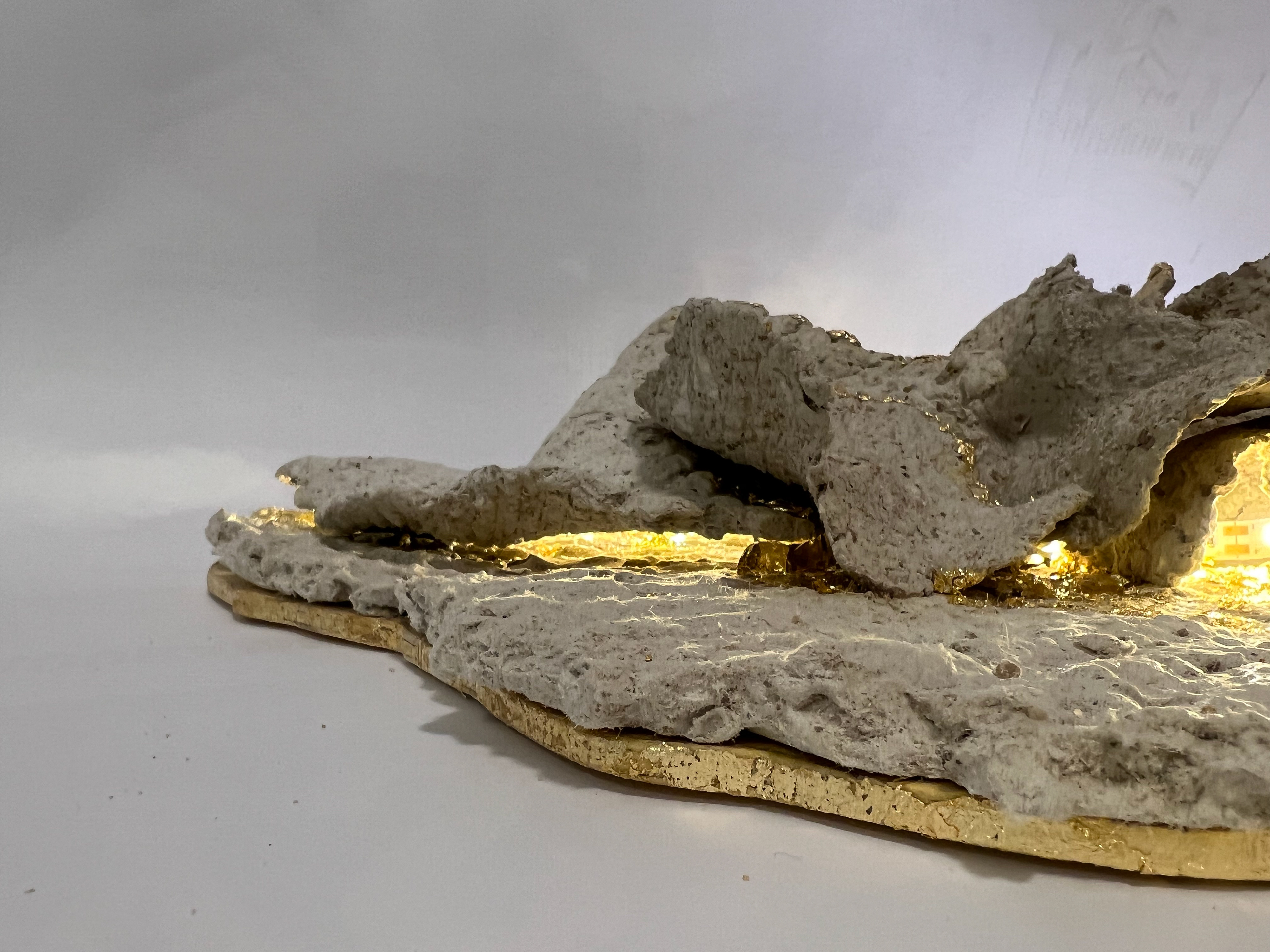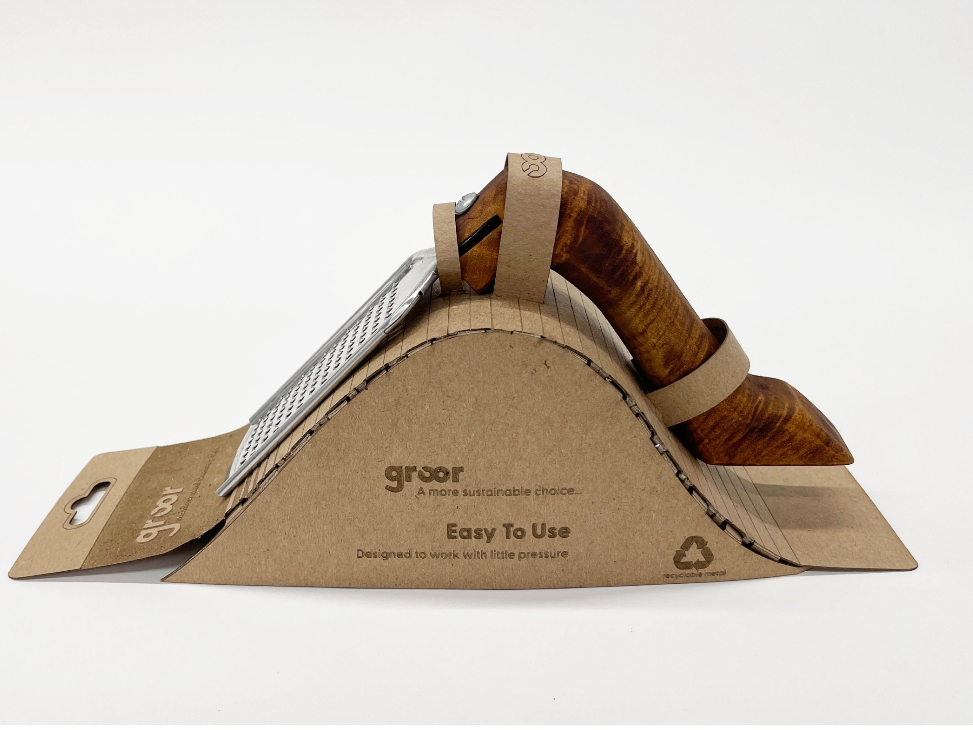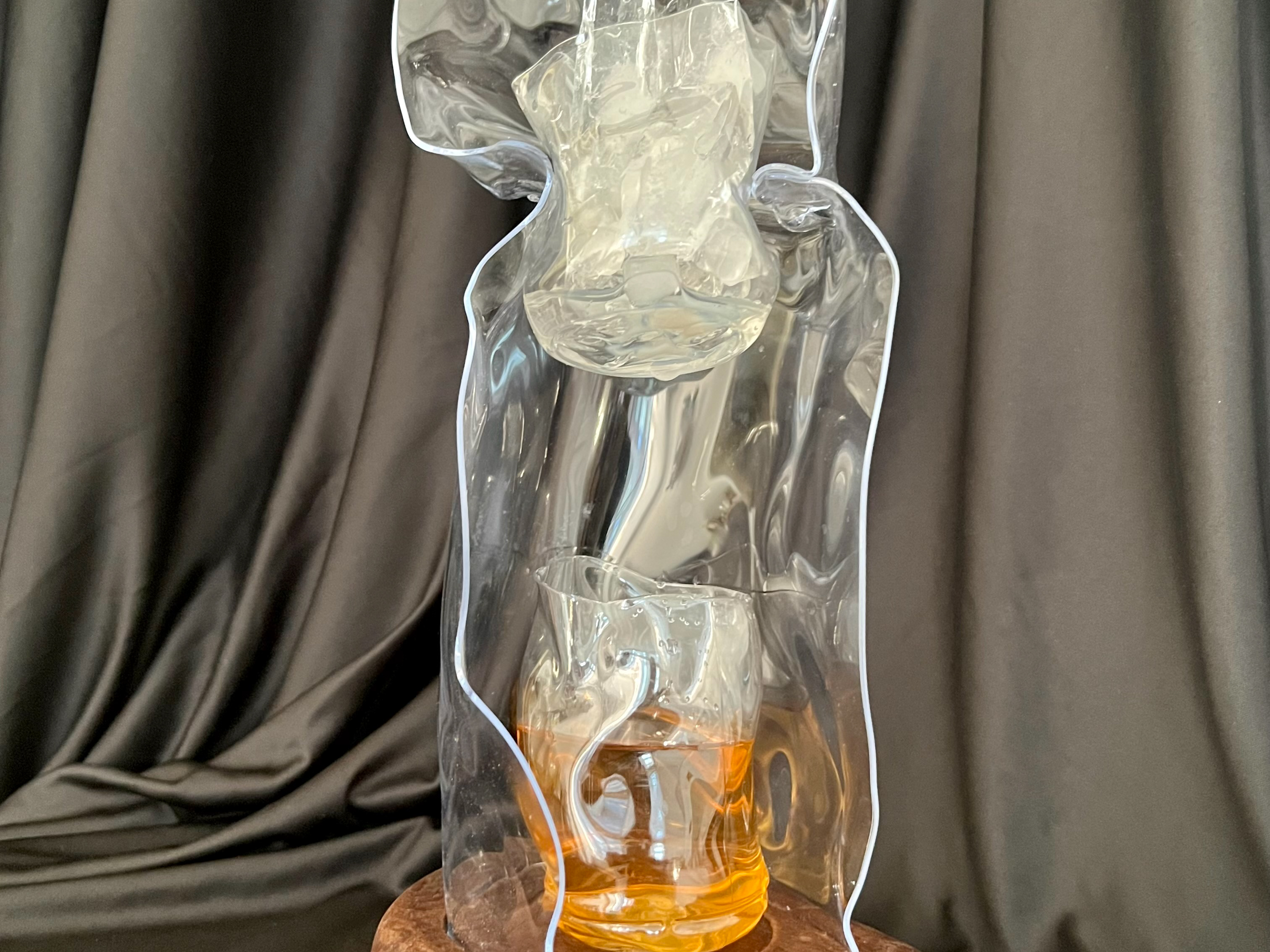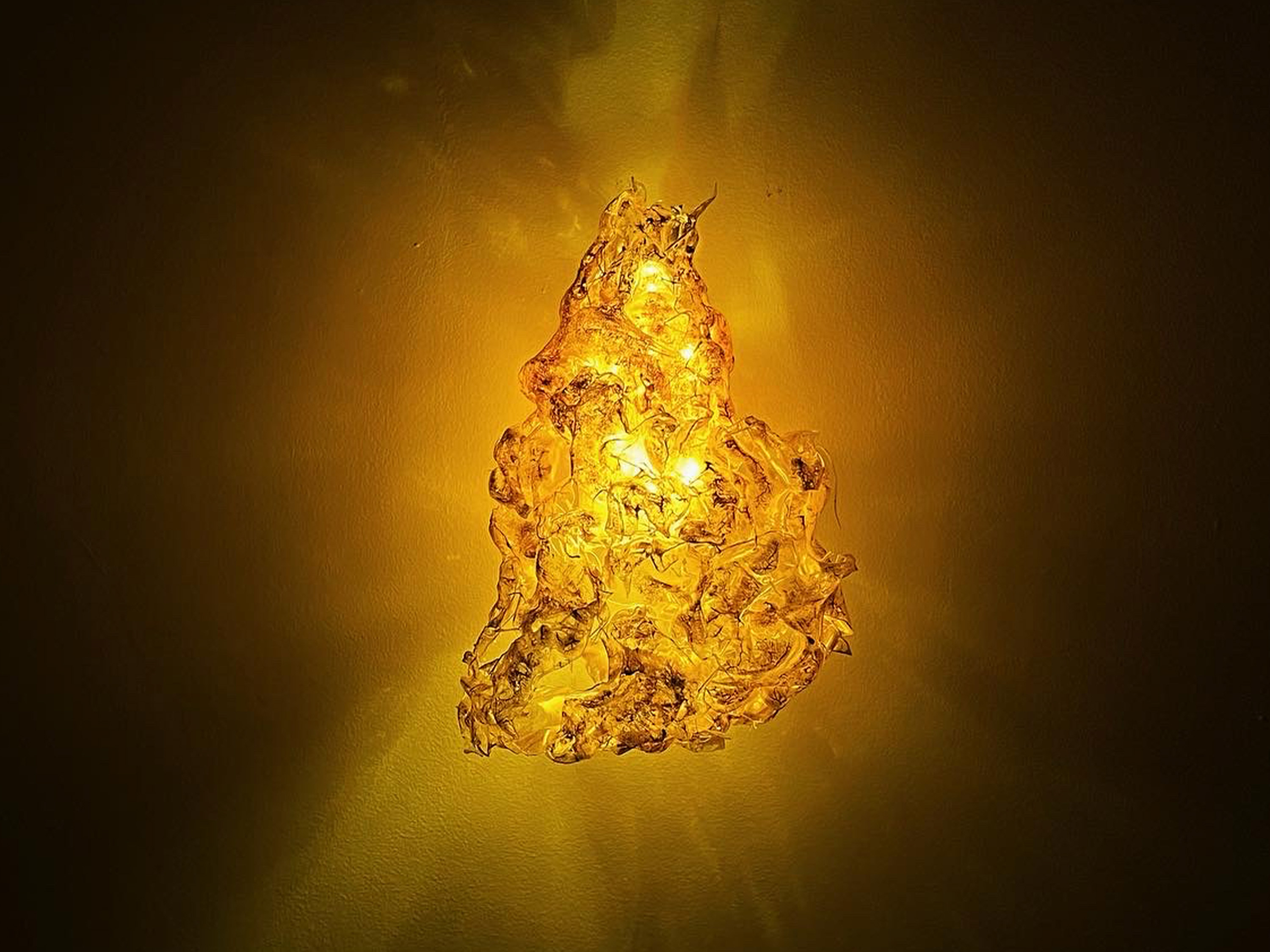“Drawing inspiration from the wabi-sabi aesthetic, this material-driven wall hanging lighting design celebrates the beauty of imperfection and the raw qualities of cement and paper. Through a minimalist and textured approach, the design captures the essence of natural landscapes, evoking a sense of tranquility and organic elegance. The lighting installation blurs the boundaries between art and function, creating a dynamic and immersive experience for the viewer. With its textured surfaces and subtle lighting effects, this wabi-sabi-inspired wall hanging brings a sense of calm and warmth to any space, inviting contemplation and reflection on the beauty of impermanence.”
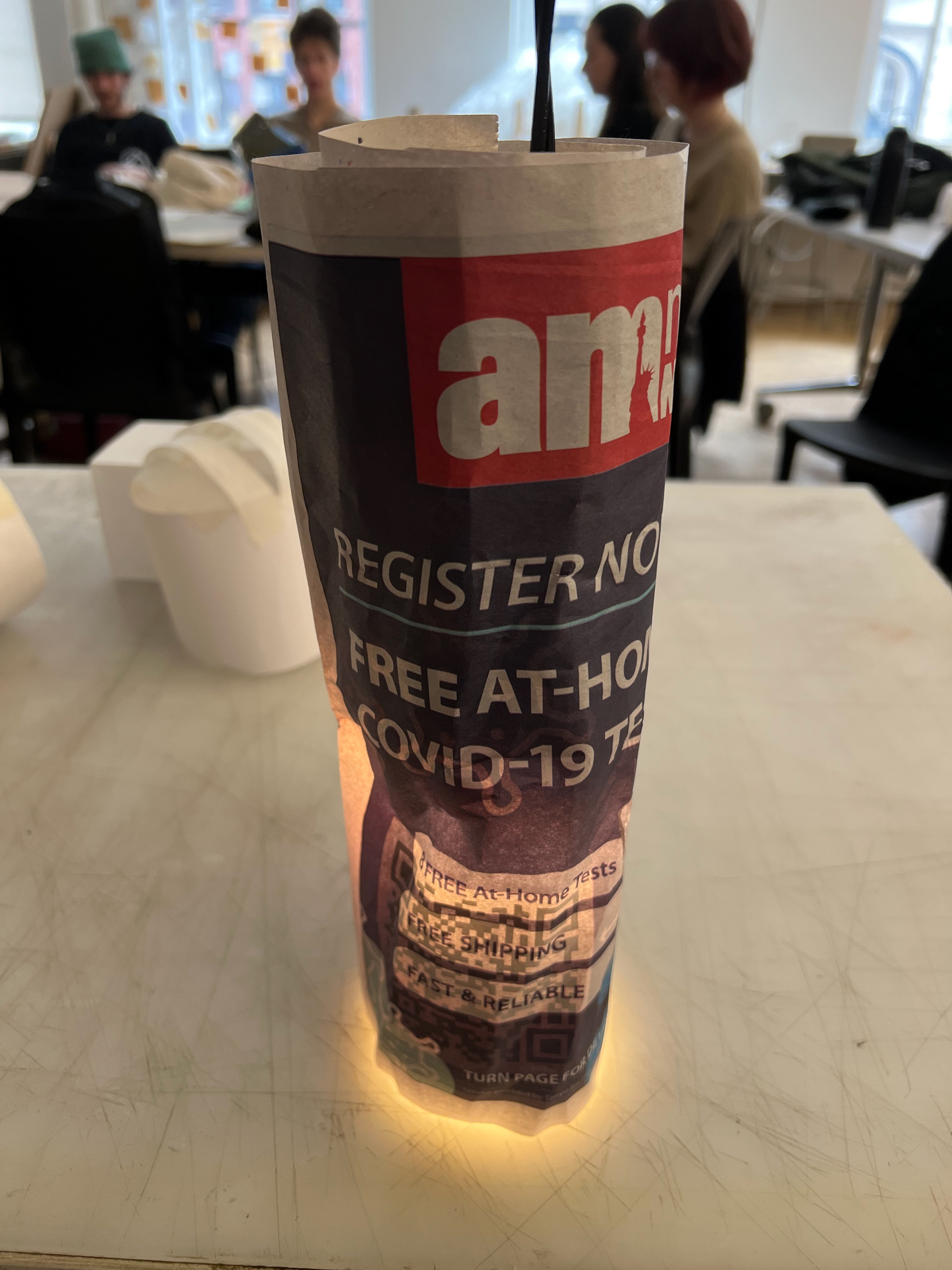
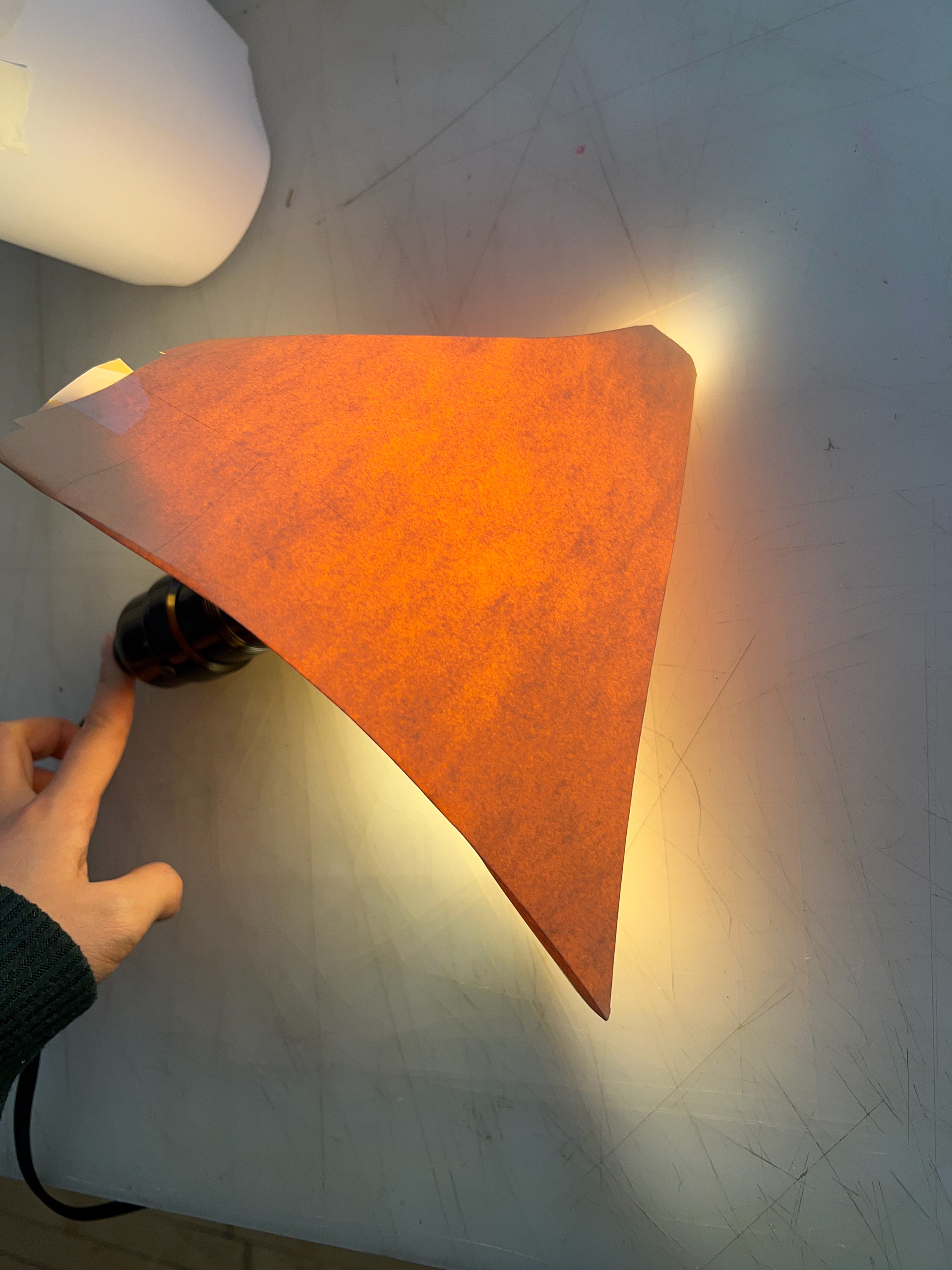
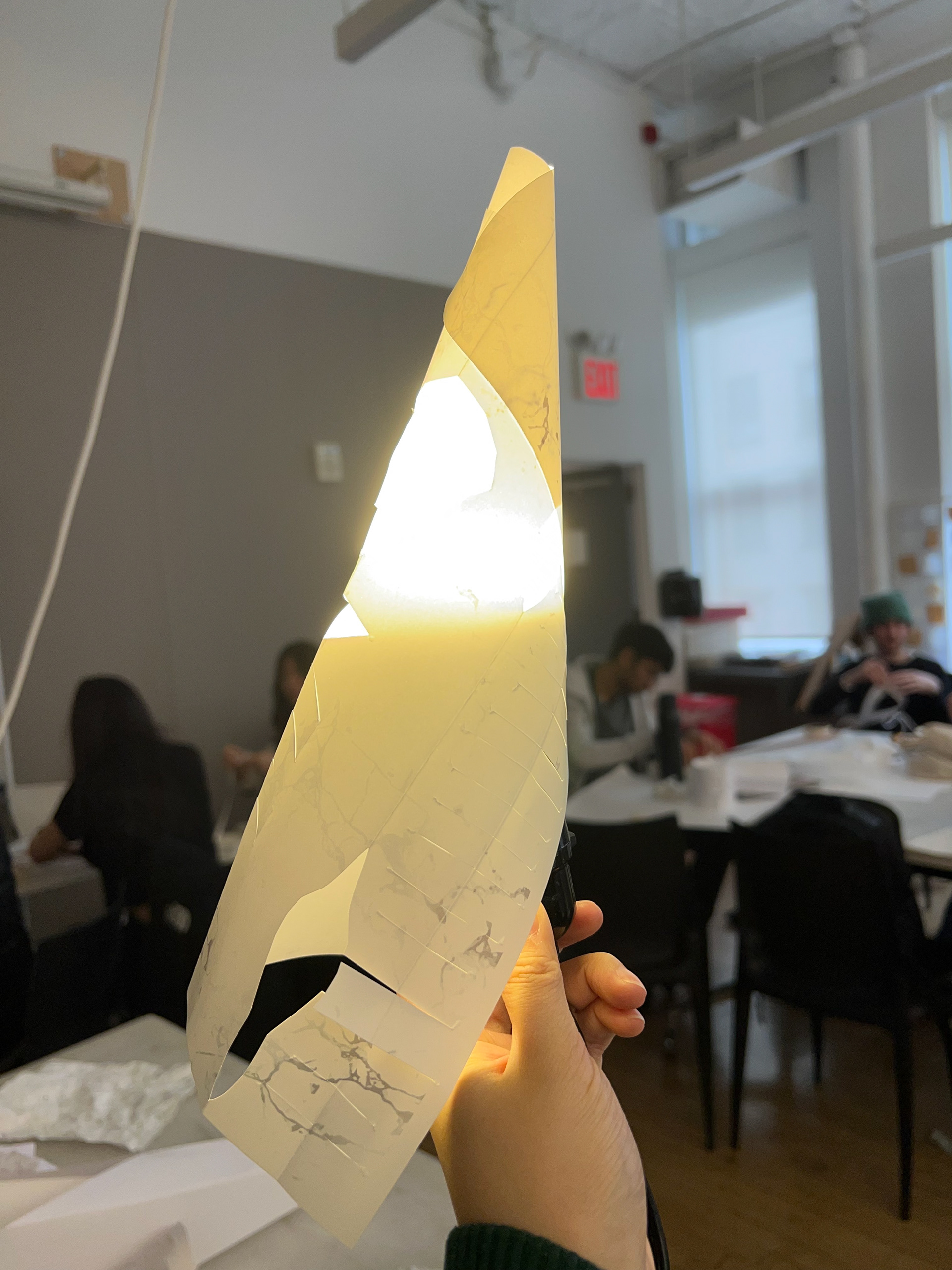
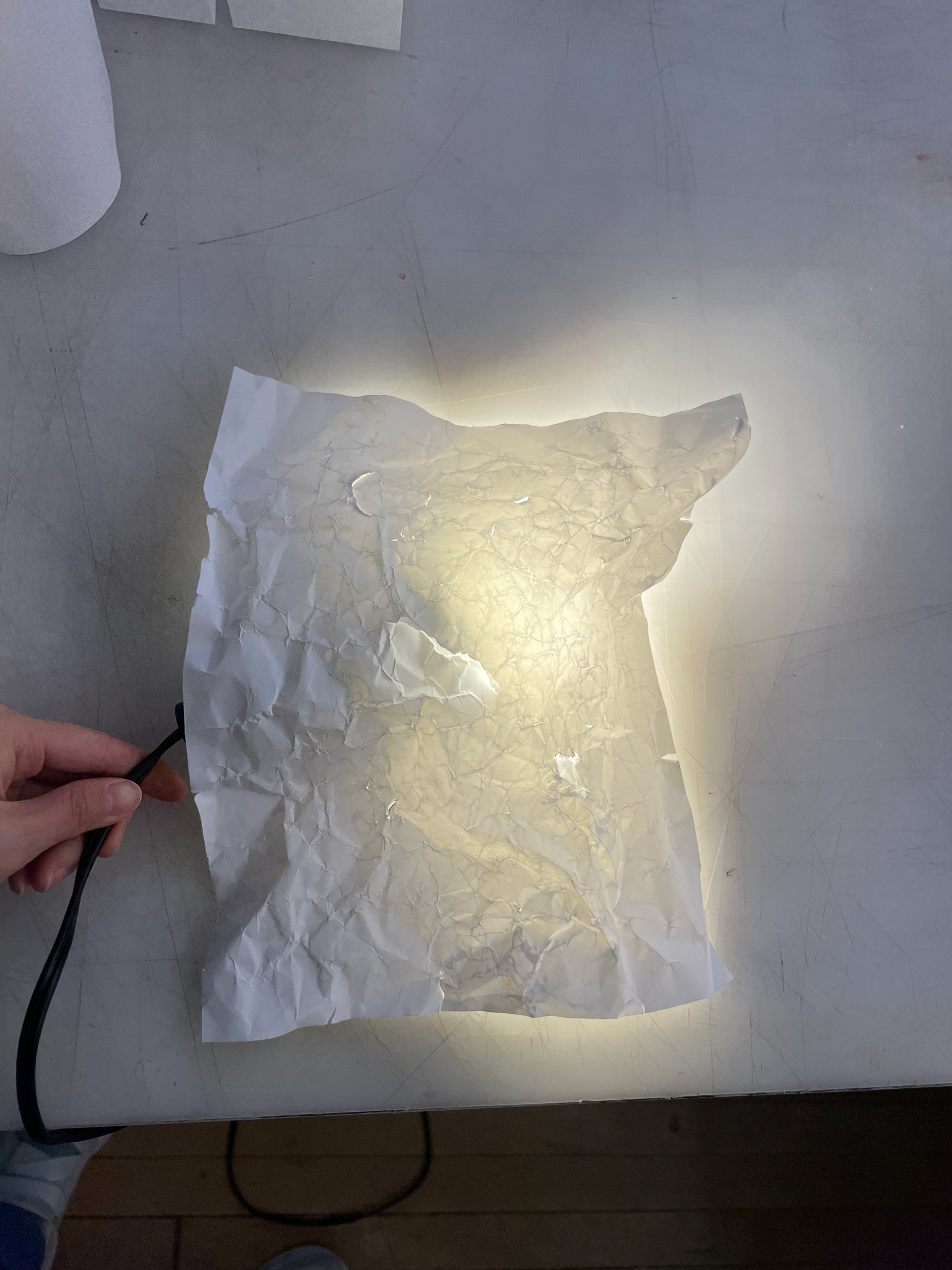
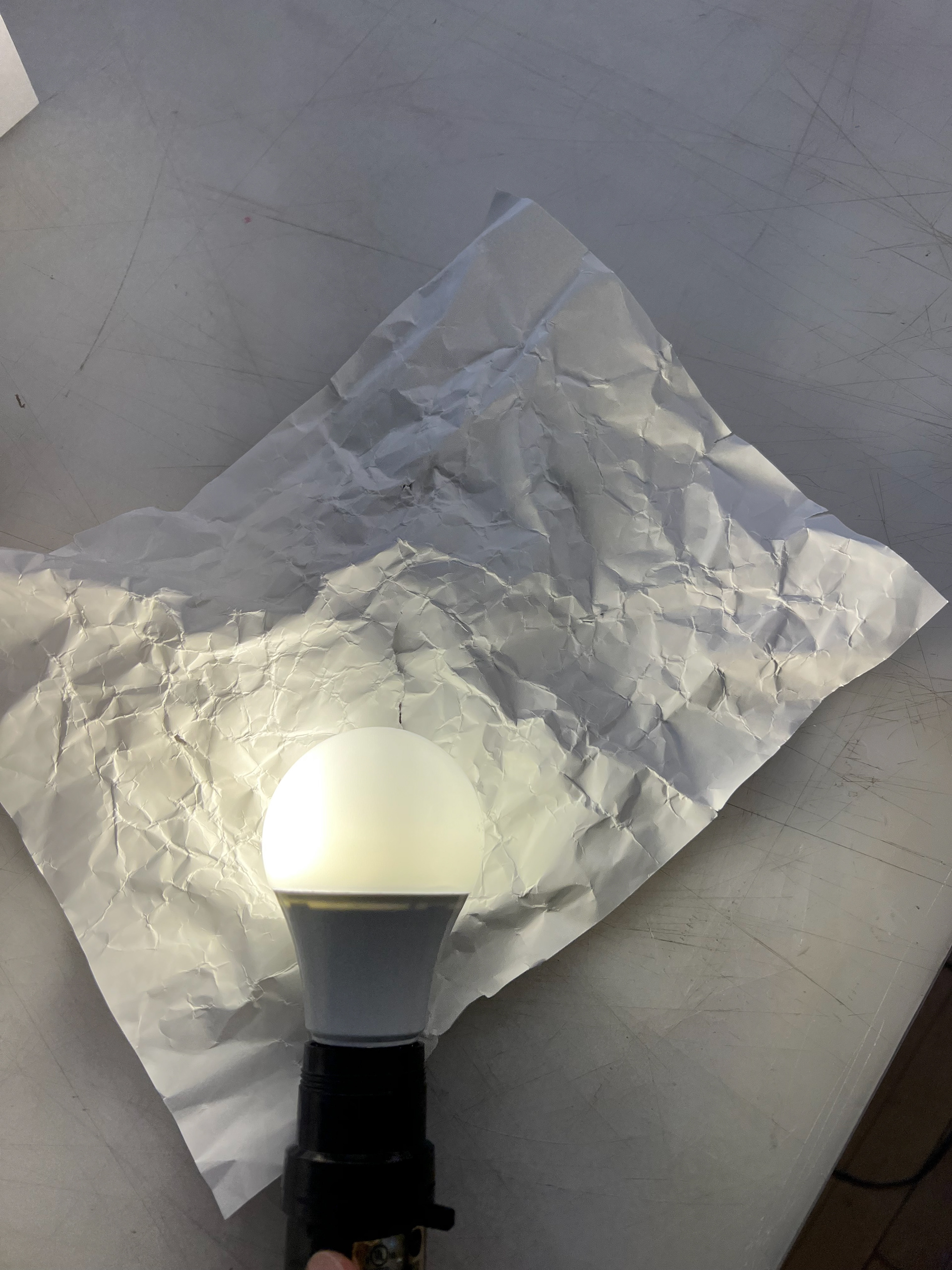
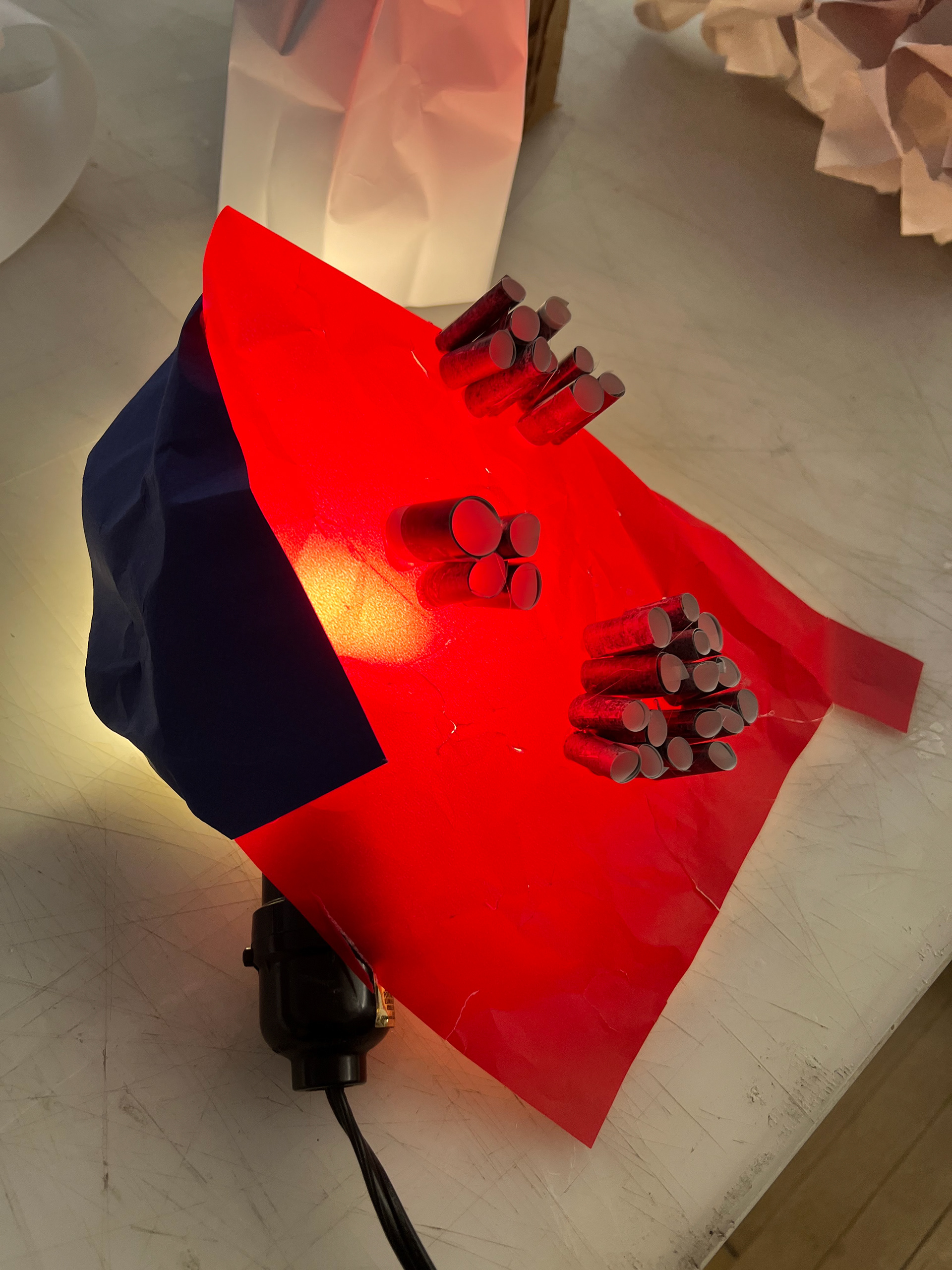
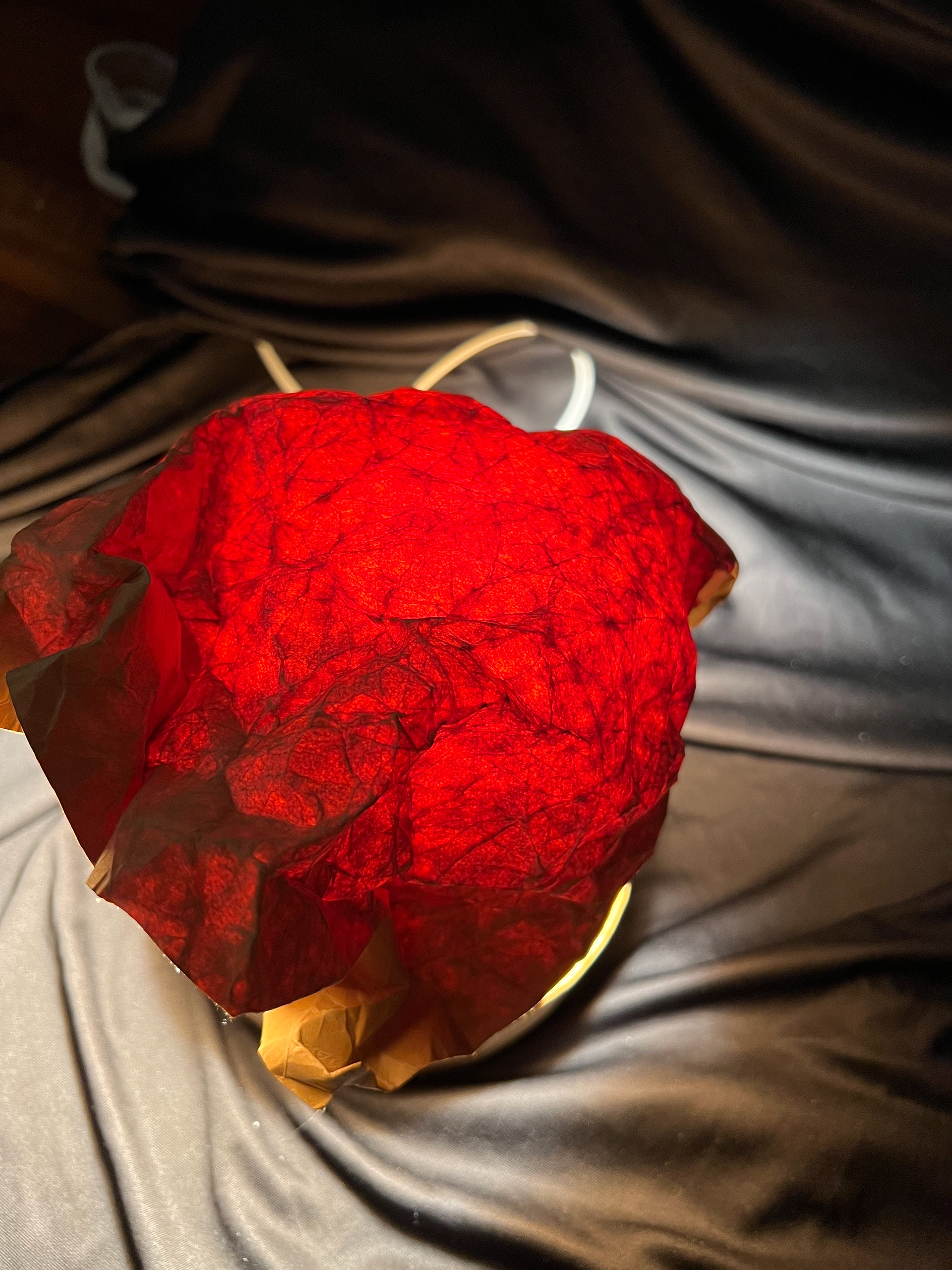

As this project starts with exploring the possibilities of paper material, I focused on navigating how the relationship between paper and light can change when it is manipulated differently.
It was an interesting process when I tried to put the light source both inside and outside of the paper material. It created a totally different effect on the lighting as the paper was folded, torn, layered and even crumbled.
In addition to trying different paper manipulations, I also tried different color types in order to see how color and texture can effect lighting. At this point, I was into the cumbled effect of paper and liked to explore more on how irregular shapes interacts with light. I went on with exploring the irregular shapes with different materials such as metal and cement, which led to the next step of this project.
After exploring with paper material, I started trying different materials and eventually decided to focus on cement and pasta. This is a stage in which I studied deeper with each material and experimented their properties and possibilities.
I tried adding soft materials such as muslin, tulle and polyester fills into cement and it appeared to be very fragile. However, the interaction with light seemed to be very interesting to me. I also tried to cast the crumbled texture with cement and it looked elegant but hard to manipulate. So I started working with paper and cement as the material to see its potential.
The experiment with pasta was the most interesting part of this project since there were so many possibilities of form, texture and color that pasta can achieve. After this project, I start viewing food differently and think of how it can become an art piece.
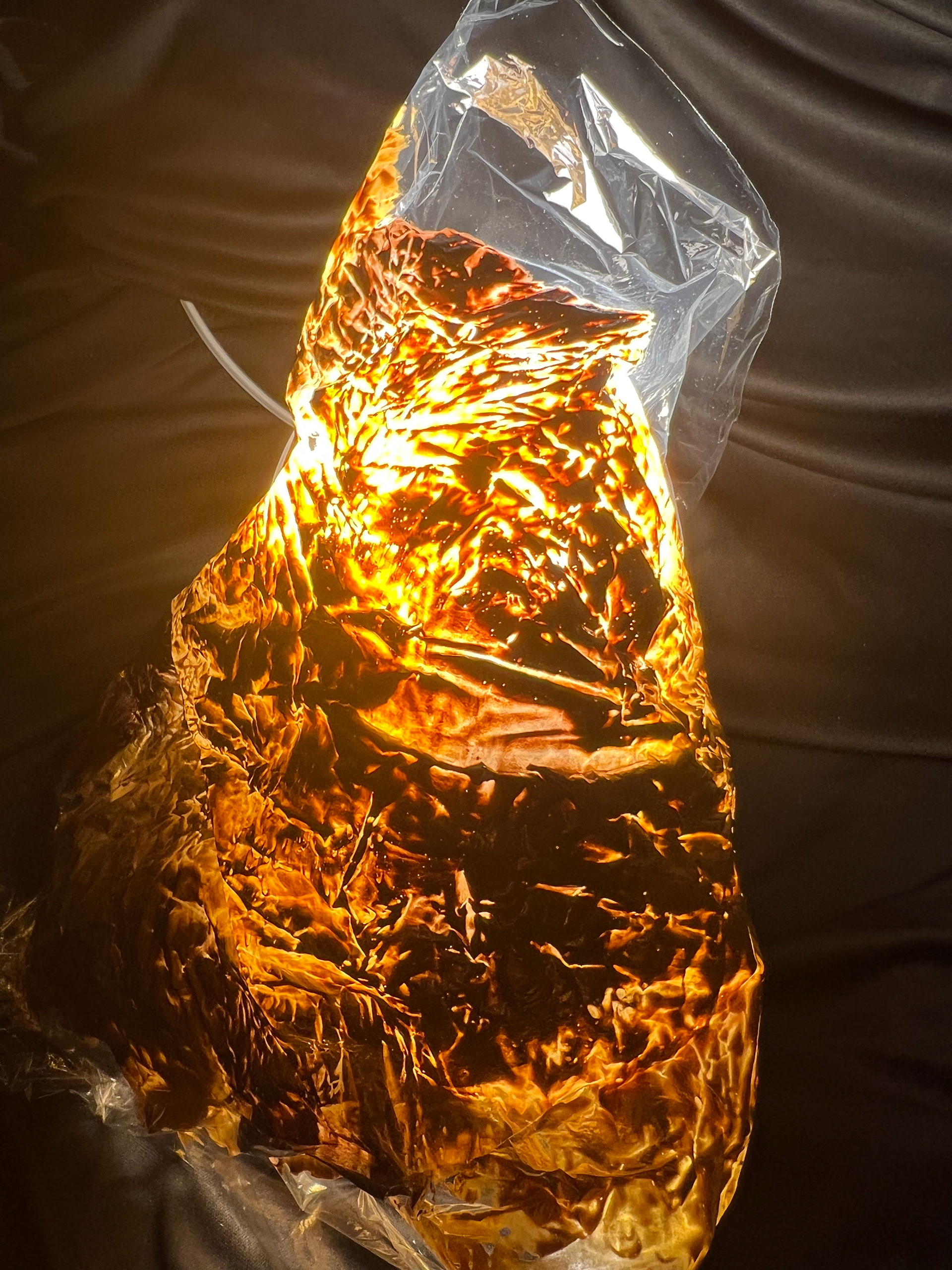
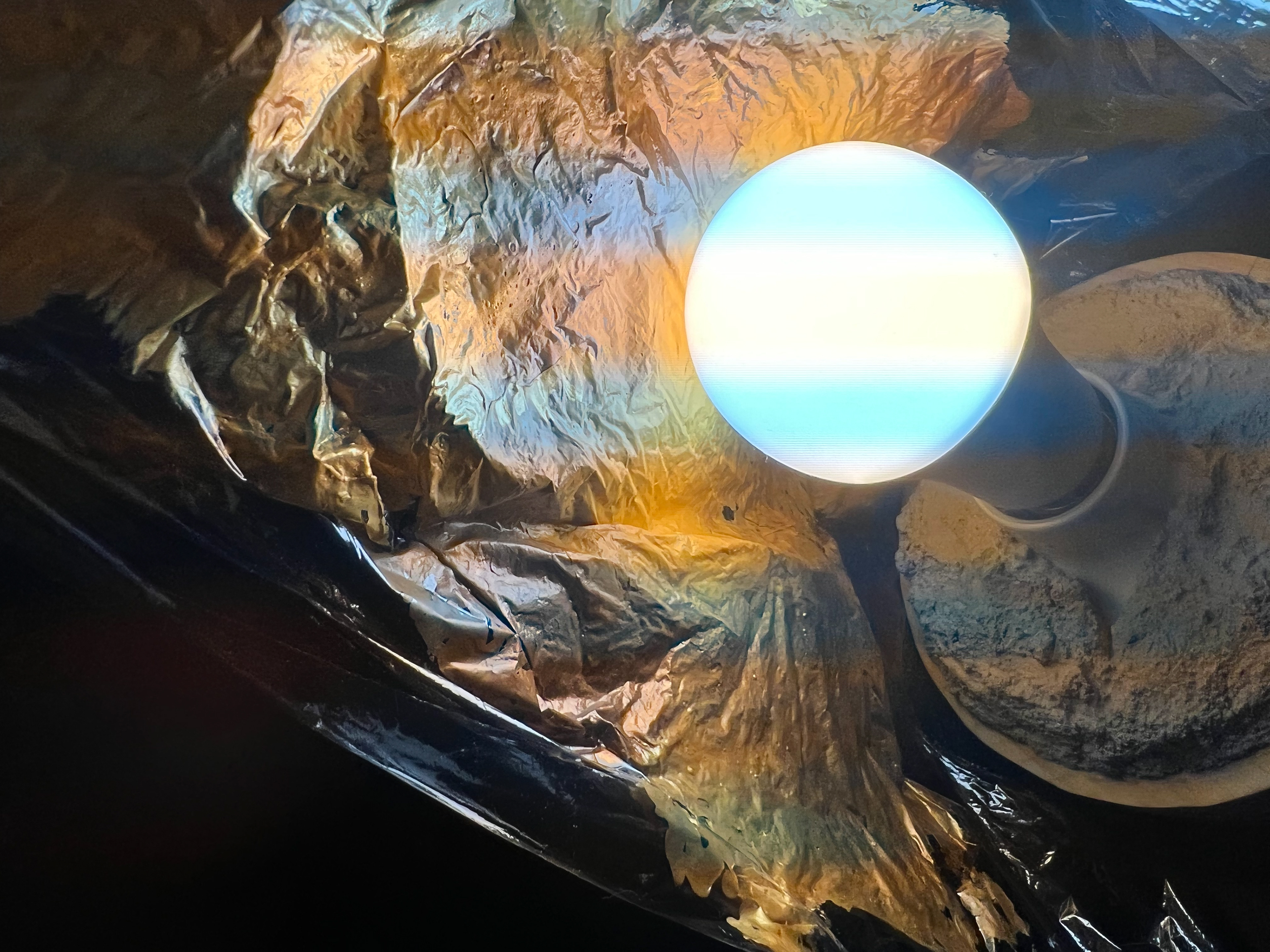
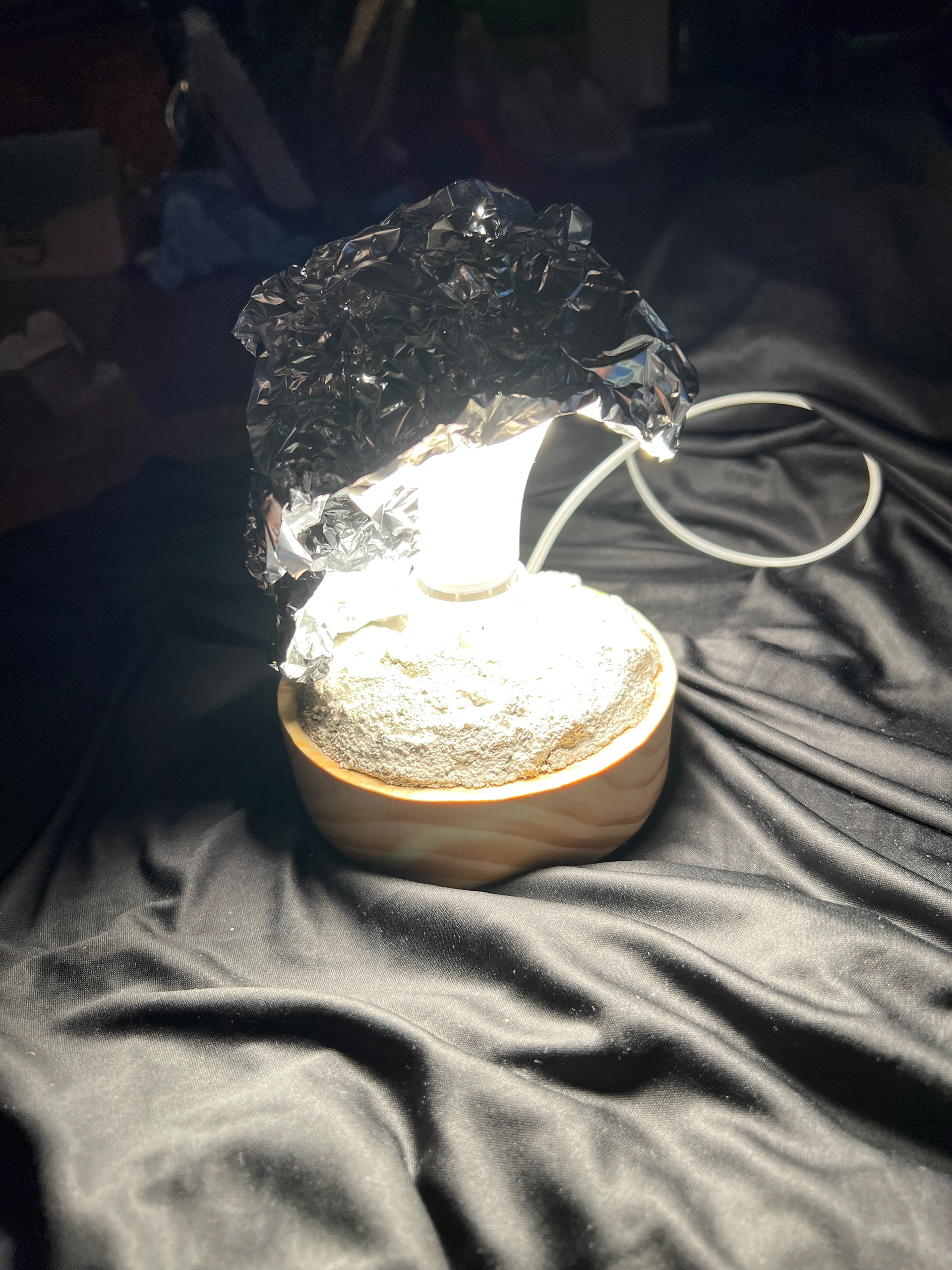

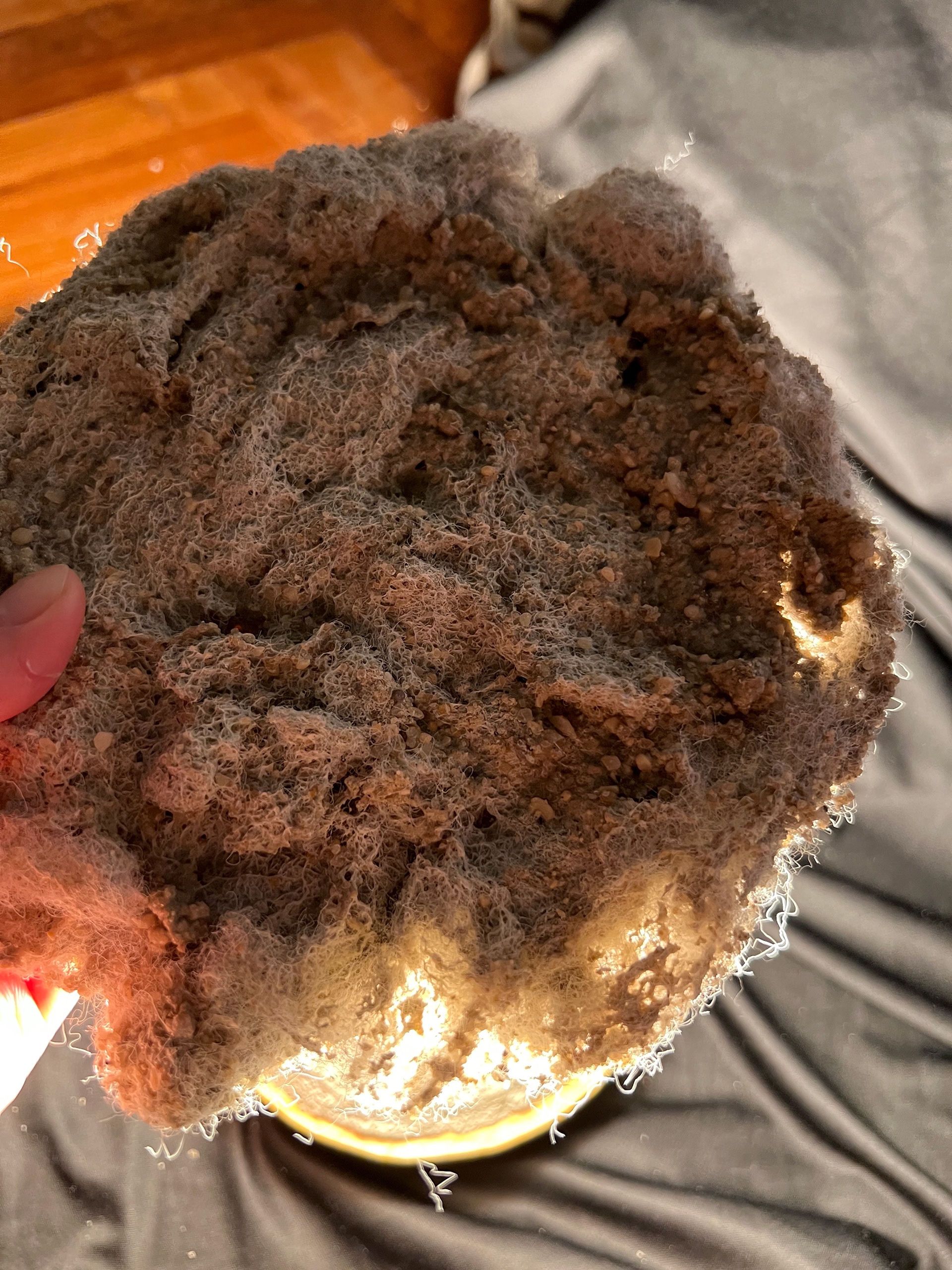
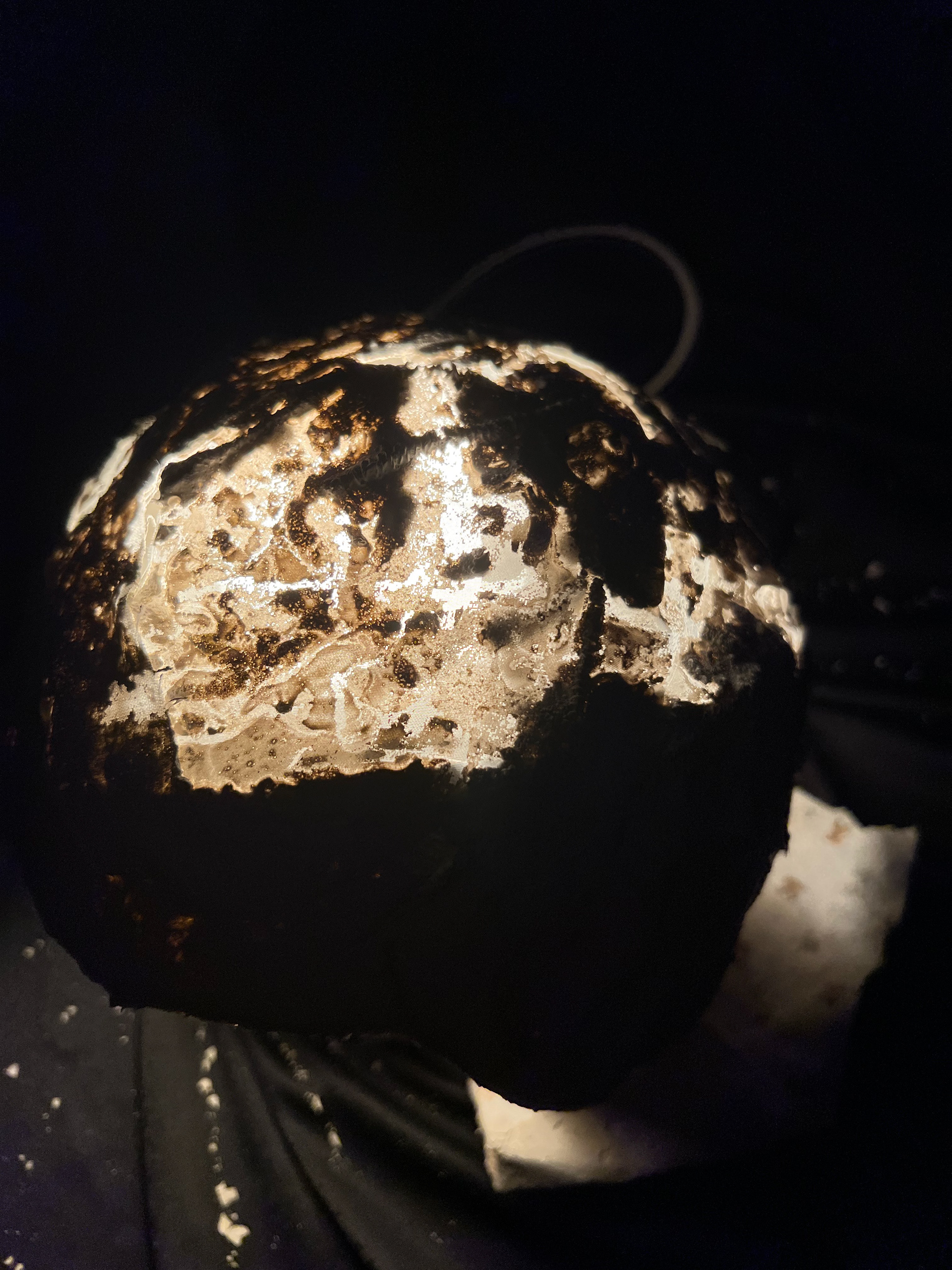
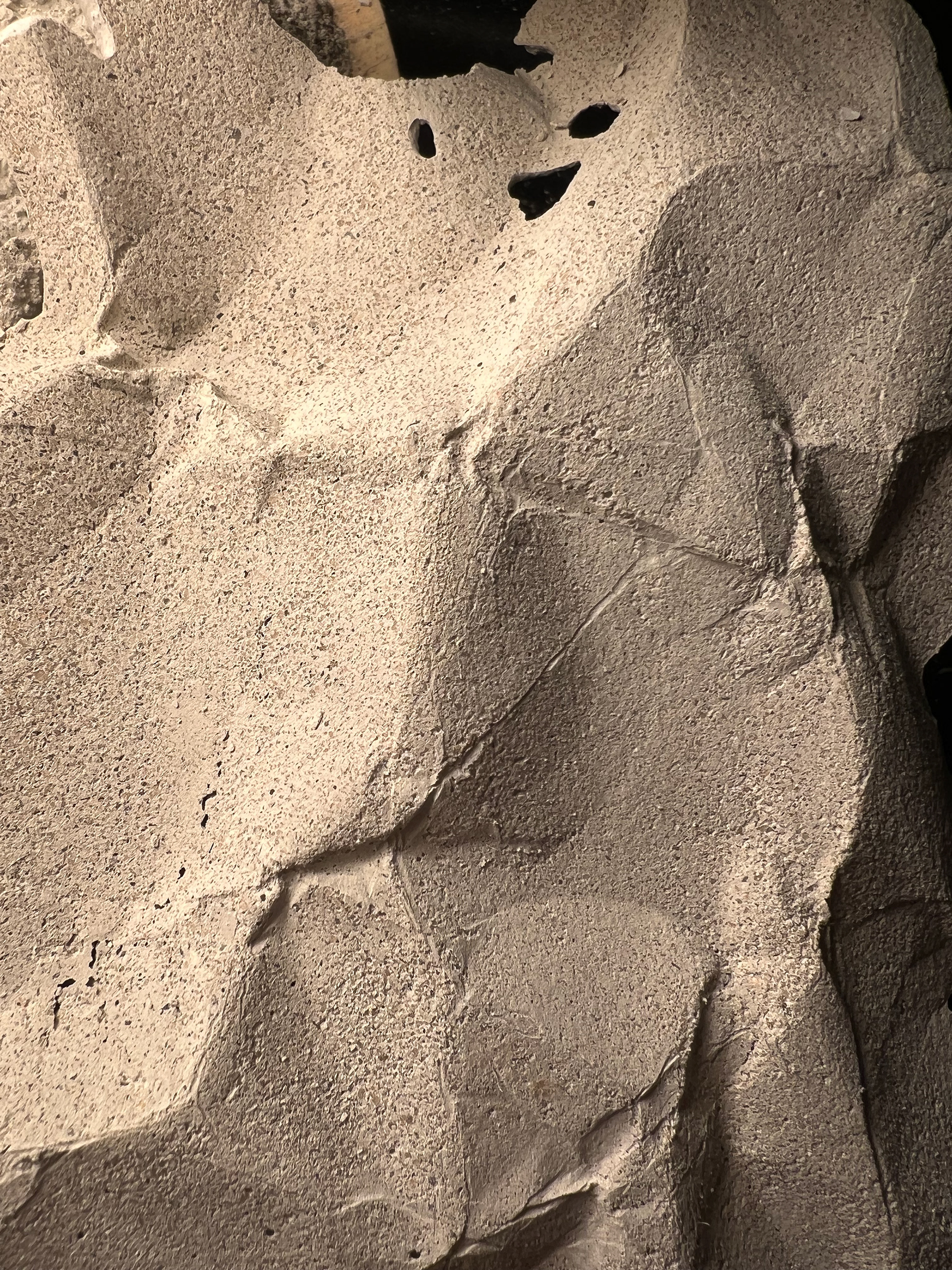



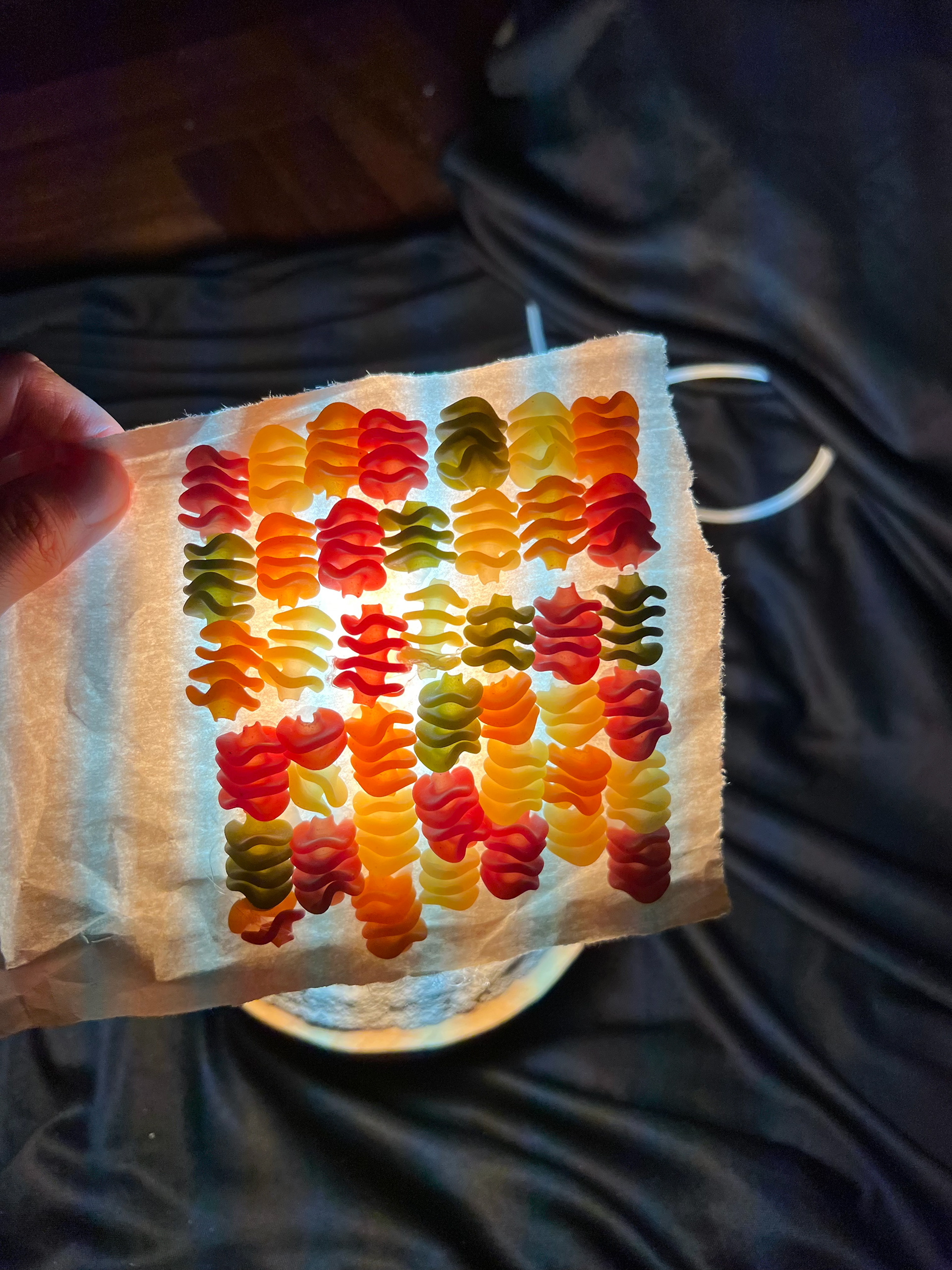
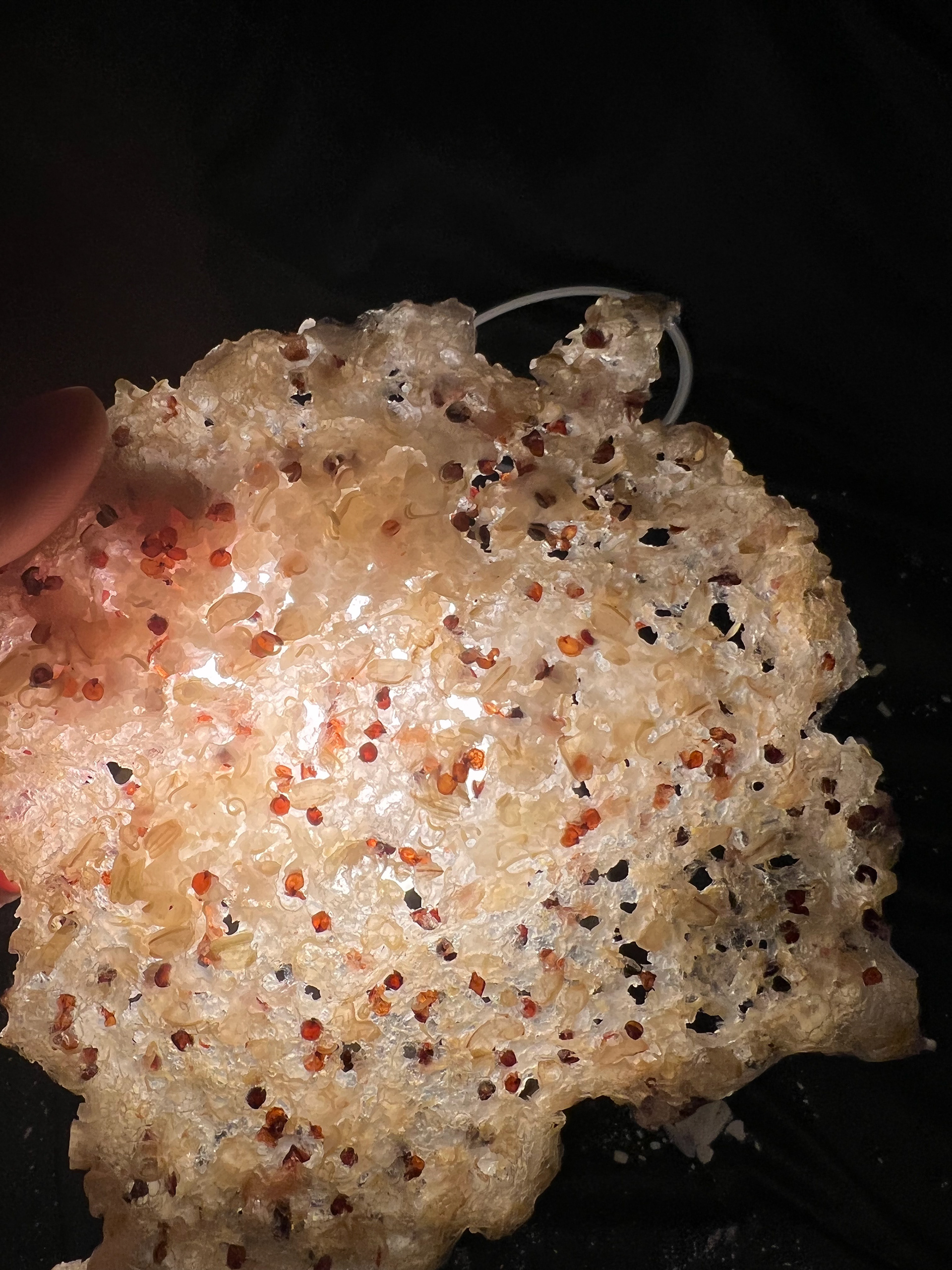
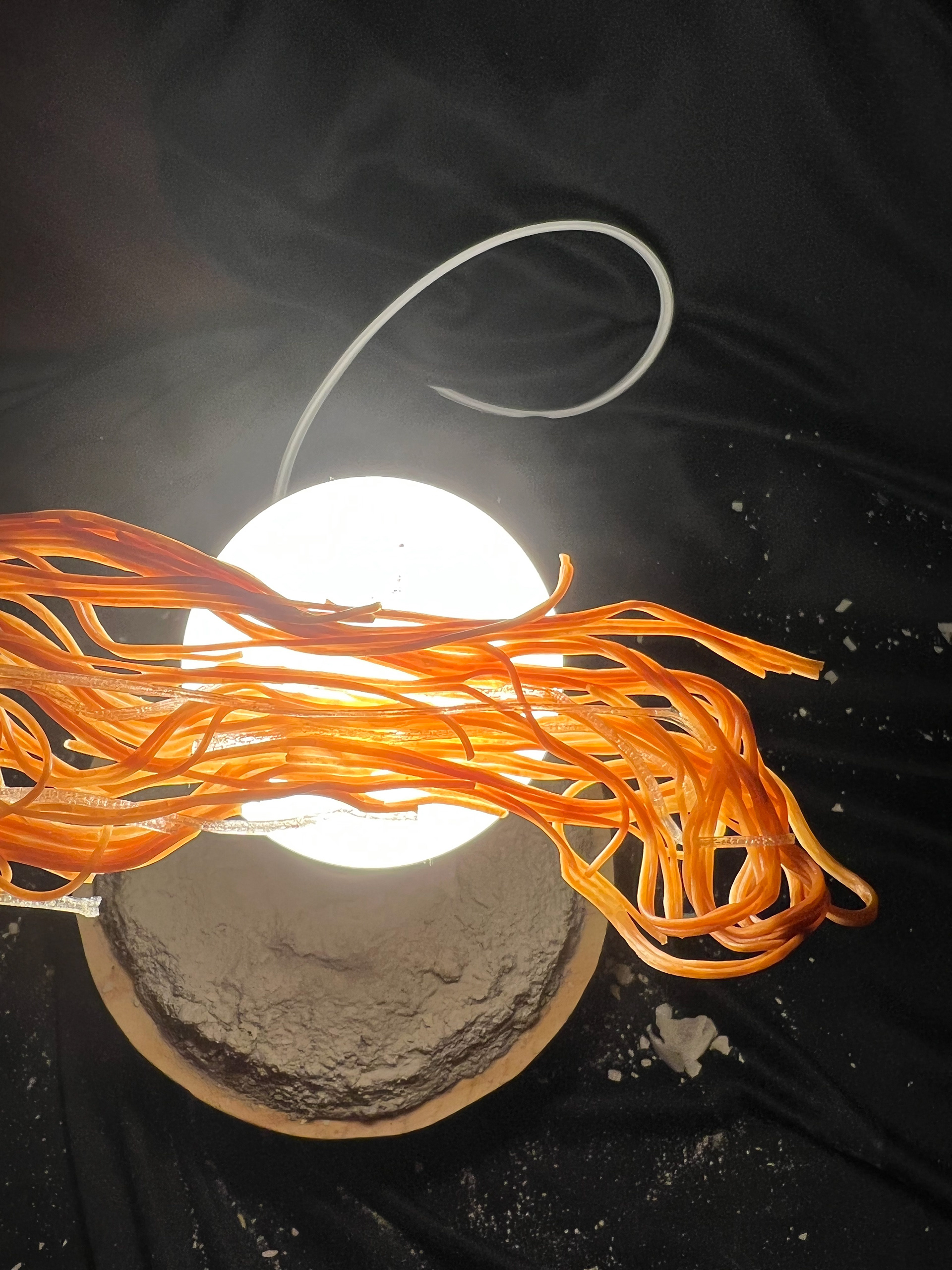
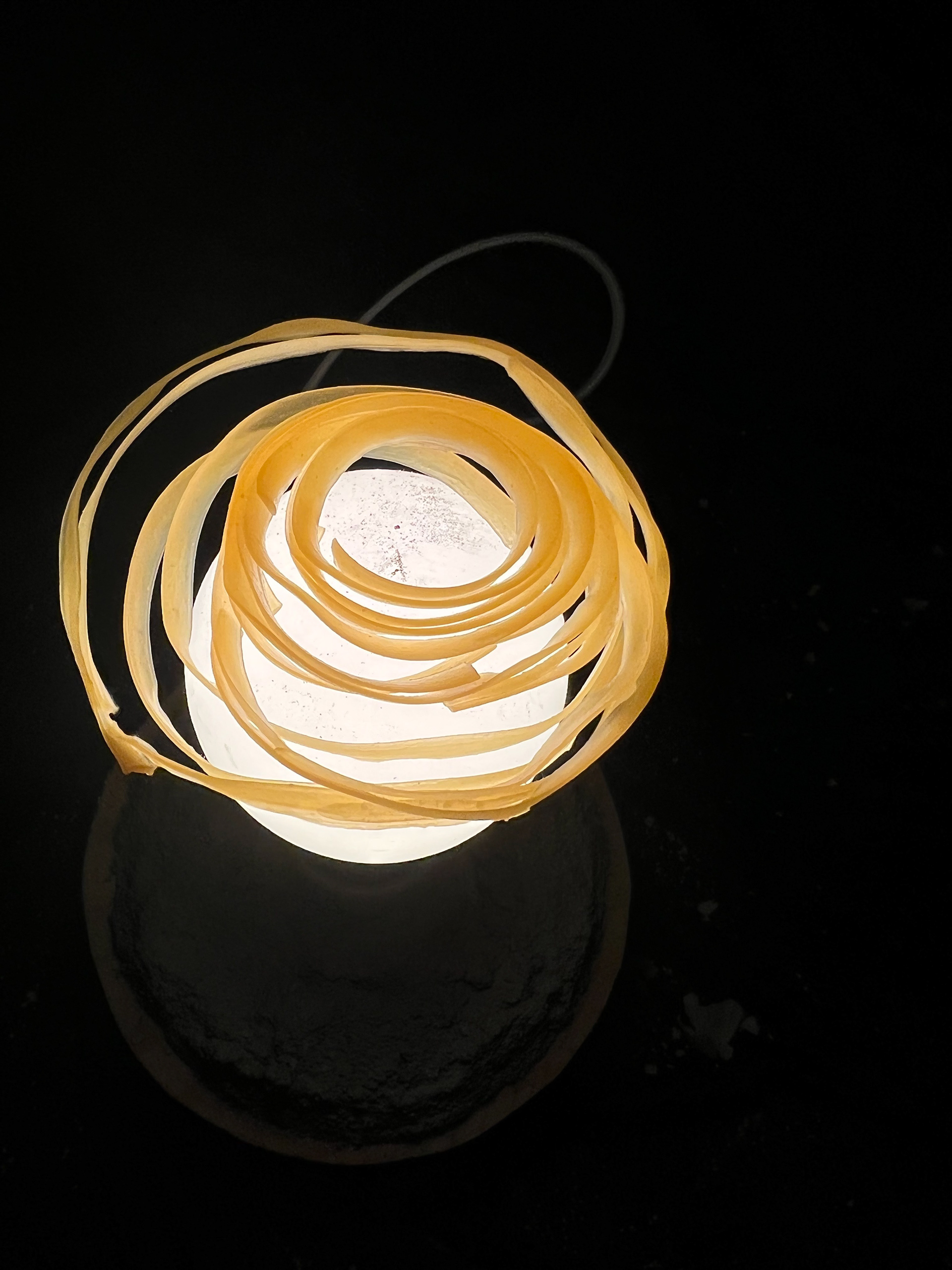


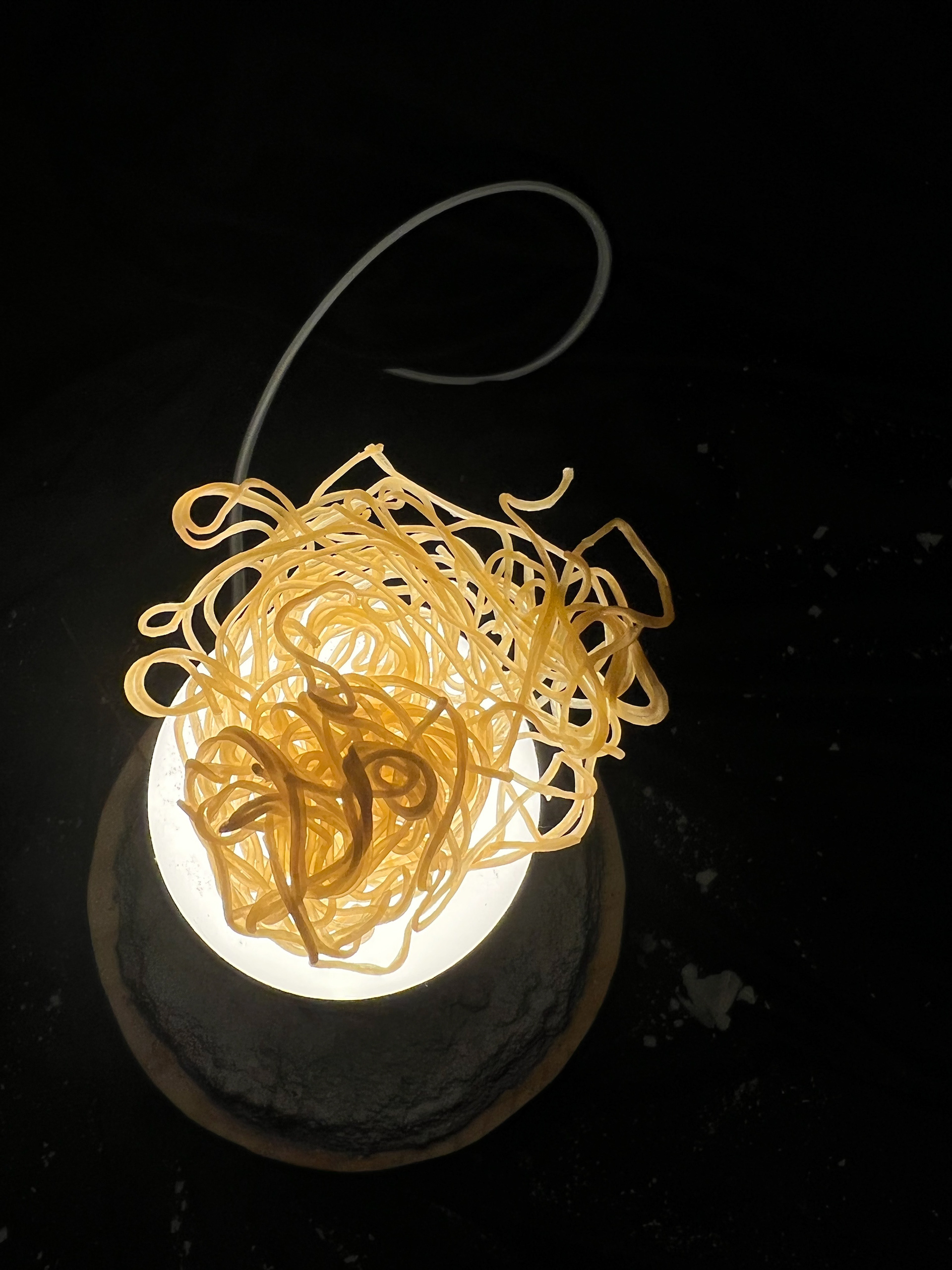
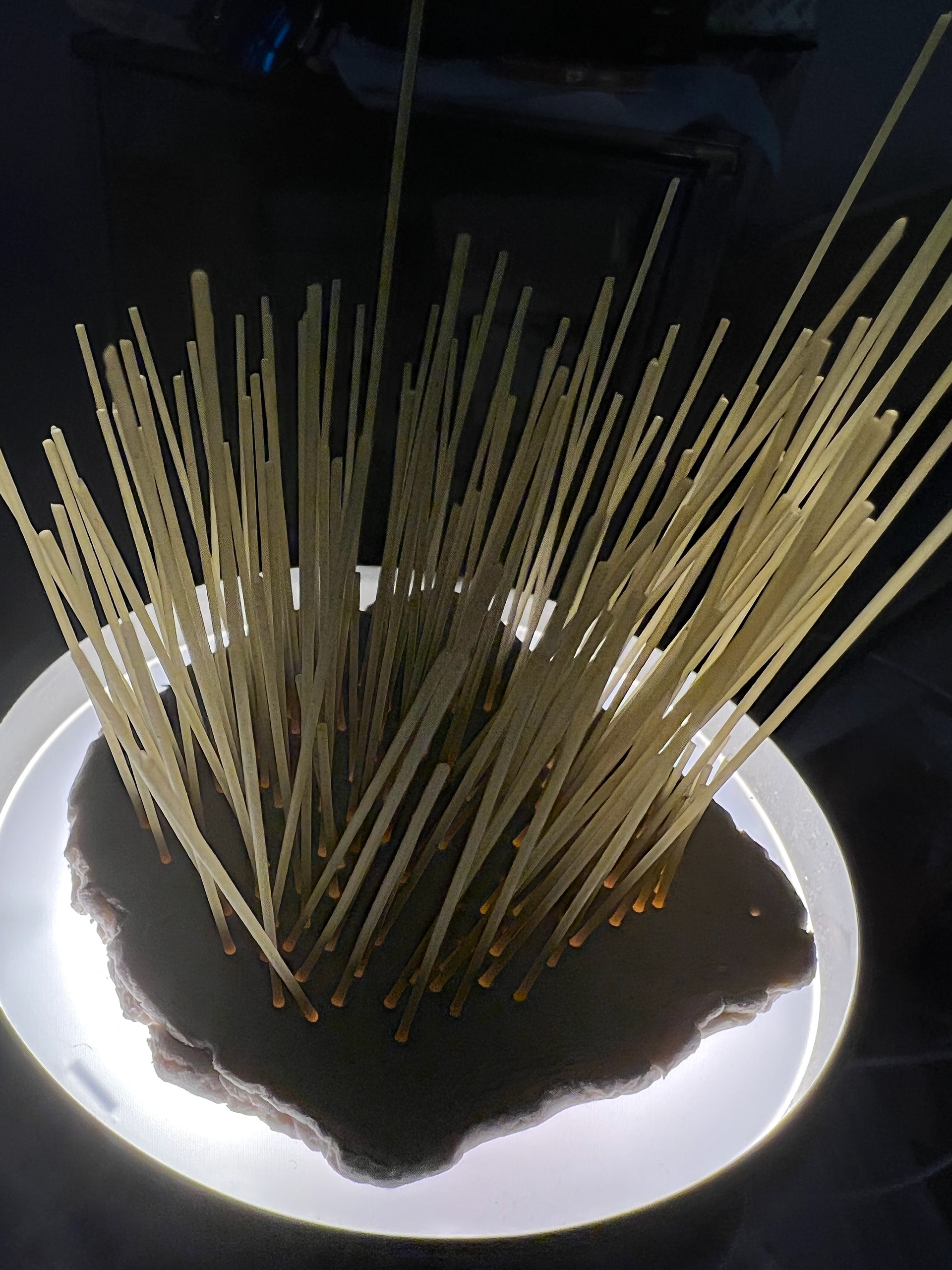
The reason why I decided to work on mixing cement with paper is because I wanted to explore how a typically hard material can be combined with a relatively soft and flexible material. I was hoping it can reach a midpoint which can be flexible at the production stage and harden into a certain degree after drying. I tried different ways to combine paper with cement including brushing cement onto paper and soaking paper in cement mix but eventually I chose to blend up the paper into pulp.



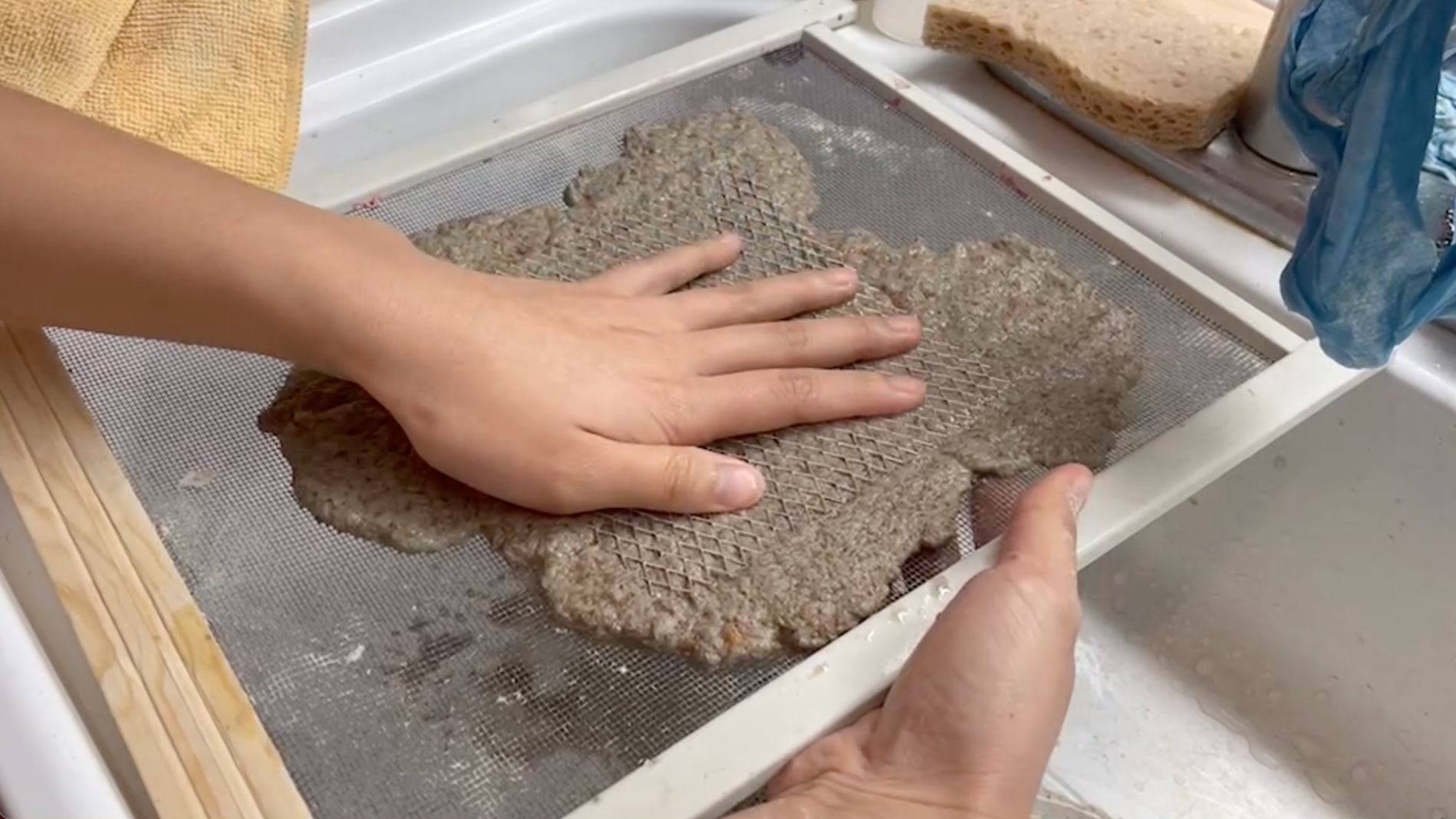

The making process is mostly about constructing the material. It stared with blending the paper into pulp and mixing with cement. After its fully mixed, I put the mix onto a window screen to drain excessive water and pressed it into a flat. In order to make it easier to manipulate, I add wire mesh onto the mix and shape it into the desired shape.
It took one to two days to be completely dried naturally. Before it’s completely dry, it can possibly crack and distort so it is a long process of making the pieces on the surface. Some pieces cracked in the drying process so I had to make extra pieces in advance.
After completing each individual piece, the challenging part came to combining the pieces. It wasn’t possible to glue it together since the special surface and I wanted to connect it seamlessly so I decided to use resin as the adhesive.
After connecting the pieces, I decided to make a backboard for the piece since the piece is too fragile. I made the backboard with plywood and glued it onto the piece.
I also applied gold leaf onto the edges of the pieces to create more dynamic reflections.
